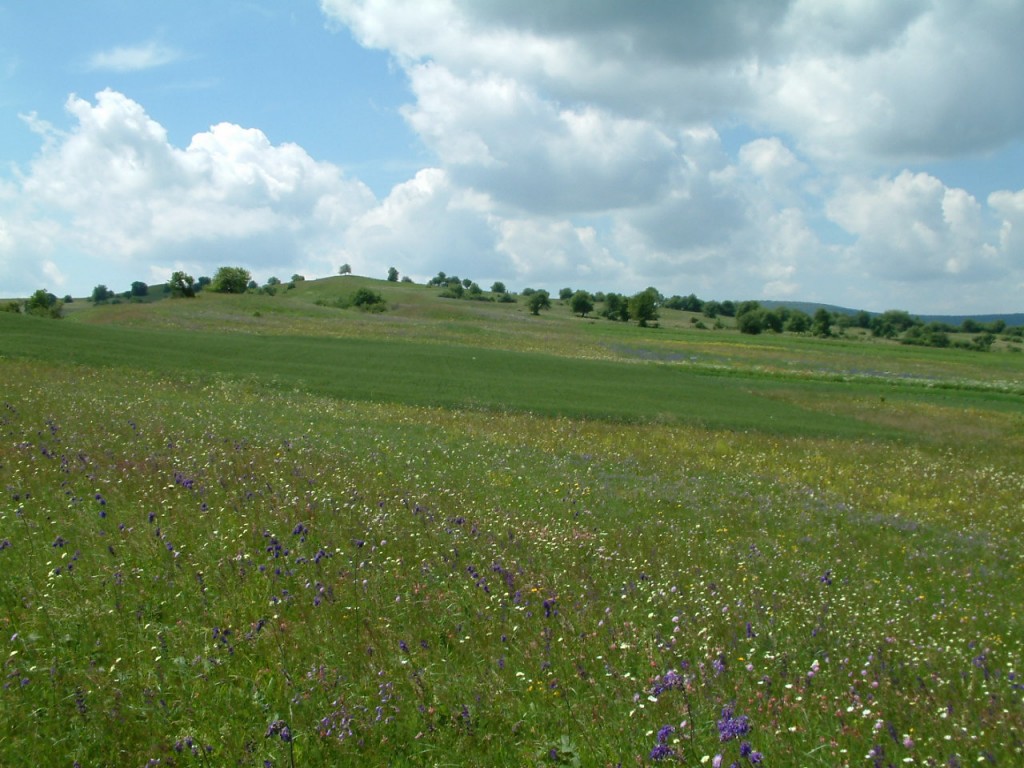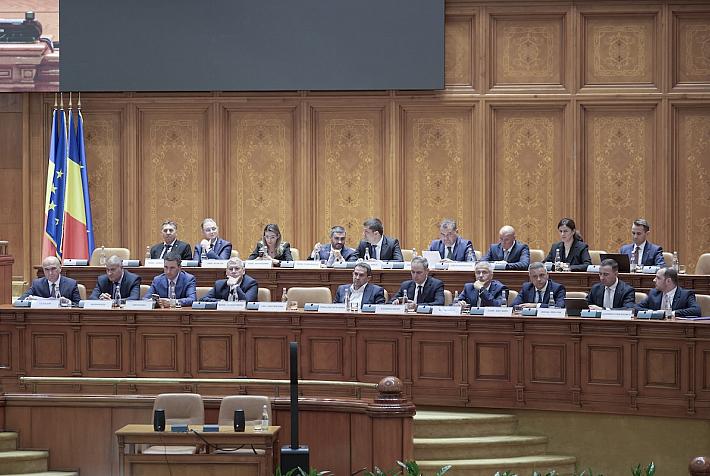Romania’s farmed landscapes - an international dilemma needing its own solution

 The Romanian Carpathian Mountains and the Transylvanian Plateau are a blend of mountains, forests and farmlands that form one of the last extensive, biodiversity-rich region within the Europe Union. Within its farmed lands are fauna-rich pastures and Europe’s last widespread hay meadows. The mountain pastures have been shepherded for centuries under, until recently, a transhumance system whilst the rolling, arable lands have not been intensively used as a consequence of Romania’s fixation with its flatlands. The region is a last stronghold of Europe’s old agriculturally-created flora and fauna and its preservation is of global importance. But just where does one start?
The Romanian Carpathian Mountains and the Transylvanian Plateau are a blend of mountains, forests and farmlands that form one of the last extensive, biodiversity-rich region within the Europe Union. Within its farmed lands are fauna-rich pastures and Europe’s last widespread hay meadows. The mountain pastures have been shepherded for centuries under, until recently, a transhumance system whilst the rolling, arable lands have not been intensively used as a consequence of Romania’s fixation with its flatlands. The region is a last stronghold of Europe’s old agriculturally-created flora and fauna and its preservation is of global importance. But just where does one start?
Possibly the greatest threat to preservation is not to recognise what they are in the beginning, to believe that they are something they are not. The wearing of rose-tinted spectacles and ignoring the real facts of life will eventually lead to the loss of these landscapes and the biodiversity therein. These are farmed landscapes and they evolved because of the activities of their local farming communities over the last few centuries. A very few have remained largely intact but these tend towards the remote. The rest have been disrupted by community-breakdown and depopulation around the great global conflicts of the first half of the 20th Century, the impact of central planning with its enforced land ownership change, and, latterly, the post-communist chaos that has been Romanian governance.
These landscapes have not gone untouched over time. They have not been farmed in a continuum, far from it. One would even question the frequent use of the word ‘traditional’ in this specific case. Over the last century there has been changes in ownership, management and in the communities that farm them. The communities themselves have seen ethnic change, no less so than in Saxon Transylvania, and there has been a significant decline in their economic circumstances and now in their demographic sustainability. It is the loss of the upland communities that is the greatest threat to the preservation of the region’s farmed landscapes.
To make a forthright statement; there are no longer the viable human communities necessary to manage and preserve the region’s invaluable landscapes. Preservation now means to first re-generate the communities so that they are attractive to the young. They may also now need a wave of incomers to improve their demographic viability.
Simply, the beauty of the landscapes alone will not sustain them. One can look upon a beautiful façade, but it will eventually decay and fall if the household that maintains it is not viable and demographically regenerating. There may be social and environmental reasons for supporting the existence of the household but, at the end of the day, the household needs to be as close as possible to self-sustaining in its own right. It is the same with the preservation of the biodiversity-rich farmed-landscapes, first economically-sustainable solutions are necessary for their communities.
However, the environmentally-valuable lands of upland Romania are vast and an equivalent vision is needed. If they are to survive through subsidization alone, large areas will have to be sacrificed for the preservation of a few. The western ideas of subsidized preservation via land stewardship schemes cannot work alone. The only solution lies within the prioritisation of production and sale of natural products derived from the region’s landscapes. The scale of these landscapes does, however, mean that the derived natural products have to be accessible to many and not to a few.
What of the ‘parachuted-in’ solutions of organic farming, ‘Slow Food’ and farmers’ markets? They are answers from the affluent west and their niche, premium-market character means that they can only help at the margins. To succeed with large-scale regeneration, it is necessary to integrate the region’s much greater, environmentally-valuable land areas into more mainstream, food-market supply-chains. In Romania per se, the farmer needs to be re-connected to the market. It is, however, not about niche markets, it is about connecting with the middle-of-the-road consumer. Large-scale land preservation can only come through selling higher volumes of natural products through the ‘normal’ retailers to closer-to-average consumers. It is a Romanian problem that requires a new and Romanian solution.
The preservation of traditional, biodiversity-rich landscapes also requires the use of the appropriate farm practices. In particular, these include forage production (especially hay-making) and the right grazing management regimes. Livestock farming is the main activity and good animal husbandry along with high welfare standards is a part of the overall picture. Resulting from these farming systems has to be natural farm produce that has been produced using specific production methods, controlled to a set of standards and sold certified with a designated-origin, natural-products marque. The marque itself being the core of a Carpathian-Transylvanian, natural-products brand.
These farming systems will also provide raw materials for local processing and the creation of high-quality, natural, processed products, thus generating off-farm local employment. The extensive sale of such products will enhance the region’s profile with the spin-off of positive promotional signals for secondary rural activities like tourism.
It is only through grant support and credit access for investment, through using good farming practices, through the development of payment-supported, land-stewardship schemes, and through the creation of a value-adding, origin-specific, natural products with an associated marque/brand that Romania’s upland farming can be re-generated. The combination will construct viable farm businesses that are attractive life-style propositions for the young, thus creating demographic sustainability for the rural communities and the management capability to preserve the landscapes. It is only thus that a great part of Europe’s agriculturally-generated, natural heritage can be saved for future generations.
This is but a short summary of how to regenerate upland Romania, its agriculture and its rural communities and thus to preserve its highland landscapes. In concept it is simple but the myriad complexity of the on-the-ground problems means that it is far from so. New solutions have to be created to match the very nature of the local problems. The solutions have to be specifically tailored to Romania, not re-treads from elsewhere. And to put the whole into context, creating and implementing the solutions necessary to regenerate upland Romania is simply the most difficult problem facing European agriculturalists since the post-1945, European-wide, food-security crisis.
By Stuart Meikle, Guest Writer
Stuart Meikle is an agricultural management consultant. He was a University of London academic and is an economist, a writer and a farmer. He has been involved within Romanian agriculture as an adviser, as an executive manager and as an observer for 15 years. The views expressed are his own and do not necessarily reflect those of Romania -Insider.com











